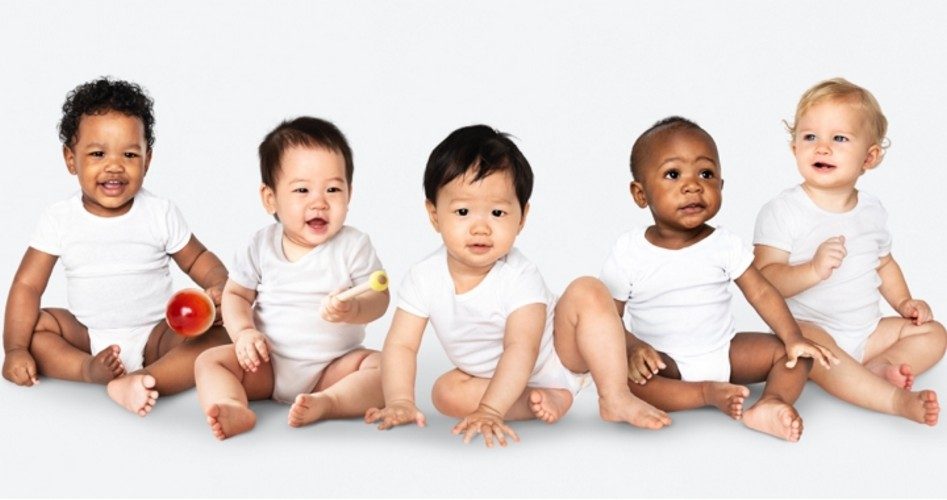
Muhammad for boys and Aaliyah for girls are now the 10th most popular baby names in United States, BabyCenter.com says, but that conclusion might be skewed by the way the center collects data.
In 2018, the names weren’t close to the Top 10, numbers from the Social Security Administration show.
But despite the conflicting data, the news invites a quesiton: How has the Muslim population in the United States grown and what does it mean for national security and the areas where they concentrate?
SSA Versus Baby Center
Sophia and Liam were the most popular names in the United States, BabyCenter reported, but “Arabic names are on the rise this year, with Muhammad and Aaliyah entering the top 10 and nudging Mason and Layla off.”
But Baby Center’s data are, in a sense, self-reported.
“To capture true popularity, our exclusive baby names list combines names that sound the same but have multiple spellings (like Sophia and Sofia, or Jackson and Jaxon),” the website noted. “Our data comes from nearly 600,000 BabyCenter parents who shared their baby’s name with us in 2019.”
Numbers from SSA show that the Muslim names are, if anything, relatively rare.
Muhammad is 345 on the list of top 500 names in the SSA database, while Mohamed is 454.
Aaliyah is closer to the top at No. 65, but still not near the Top 10.
Fatima is 344.
The Baby Center’s Top 10 does overlap with SSA’s however: Liam is No. 1 in both for boys, while Elijah, Lucas, Oliver, and Noah are in both. While Sophia is the No. 1 name for girls at Baby Center, Emma is No. 1 at SSA. But as with boys’ names, a number of girls’ names appear in the Top 10, although not in the same place.
Islamic Immigration
Where or whether Muhammad is on either list, there is no question that Islamic immigration has substantially increased the Muslim population in the United States since about 1980.
Last year, the Migration Policy Institute provided some startling numbers in its report on immigrants from the Middle East and North Africa.
In 1980, that immigrant population was just 223,000. It increased more than 56 percent to 348,000 in 1990, then another 71.3 percent to 596,000 in 2000. The inflow grew to 861,000, or 44.5 percent by 2010.
Through the next years, that population increased 35 percent to 1,167,000.
Total increase from the Islamic Middle East and North Africa? 423 percent.
In 2017, Pew Research put the Muslim population of the United States at 3.45 million, about 1.1 percent of the total. And 58 percent of those “Muslim-Americans” were foreign born.
Thirty-five percent of those “foreign born” came from South Asia — India, Bangladesh, Pakistan, and Afghanistan — while 25 percent came from the Middle East or North Africa — Iraq, Kuwait, Syria, and Egypt. Eleven percent came from Iran, 9 percent from Sub-Saharan Africa, and the rest from elsewhere.
Contrary to what open-borders advocates might say, all of those new arrivals have not been a blessing for the communities in which they settle.
In Lewiston, Maine, the influx has caused a major crime and welfare problem.
Minneapolis, Minnesota, for instance, has become the terror recruiting center of the country thanks to the influx of Somali refugees.
The Boston Marathon bombers were radicalized Muslim refugees. Omar Mateen, who murdered 49 people at a nightclub for homosexuals three years ago, was born in the United States to radical immigrant parents from Afghanistan.
As well, Islamic refugees and immigrants are persuading voters to send them to Congress. An example is Ilhan Omar, the angry Muslim radical from Minneosta who is credbily accused of a fake marriage to her brother to perpetrated immigration and student-loan fraud.
Another is Rashida Tlaib, an angry Muslim radical from Michigan who raised money from Islamic extremists.
Better News
Good news is, President Trump’s travel ban on visitors from at least a few terror-plagued countries — Iran, Syria, Libya, Yemen, and Somalia — slowed the flow of radical Islamists coming to America as “refugees.”
In September, the Washington Post reported that immigrant visas from those countries were 1,419 in October 2017, but dropped to 69 in January 2018. “Take Iran as an example,” the Post reported. “Only 537 immigrant visas were issued in 2018 to people born in Iran for the 12 months after the travel ban went into effect. In 2017, 6,643 immigrant visas were issued to people born in Iran.”
In other words, visas from Islamist-dominated countries considered a terror threat to the United States dropped 95 percent to near nothing, and in Iran alone dropped 92 percent.
Photo: Rawpixel/iStock/Getty Images Plus


